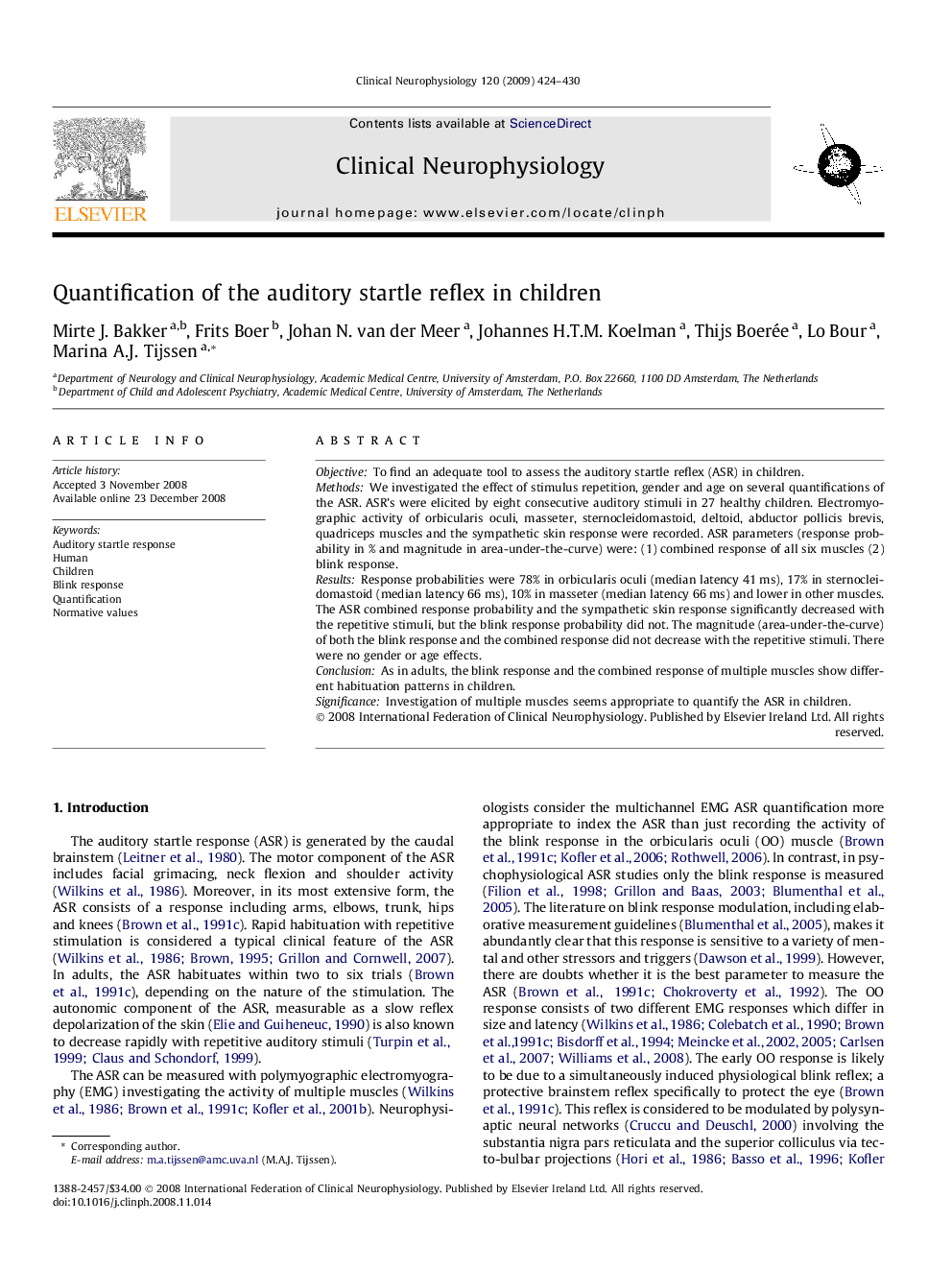| Article ID | Journal | Published Year | Pages | File Type |
|---|---|---|---|---|
| 3047140 | Clinical Neurophysiology | 2009 | 7 Pages |
ObjectiveTo find an adequate tool to assess the auditory startle reflex (ASR) in children.MethodsWe investigated the effect of stimulus repetition, gender and age on several quantifications of the ASR. ASR’s were elicited by eight consecutive auditory stimuli in 27 healthy children. Electromyographic activity of orbicularis oculi, masseter, sternocleidomastoid, deltoid, abductor pollicis brevis, quadriceps muscles and the sympathetic skin response were recorded. ASR parameters (response probability in % and magnitude in area-under-the-curve) were: (1) combined response of all six muscles (2) blink response.ResultsResponse probabilities were 78% in orbicularis oculi (median latency 41 ms), 17% in sternocleidomastoid (median latency 66 ms), 10% in masseter (median latency 66 ms) and lower in other muscles. The ASR combined response probability and the sympathetic skin response significantly decreased with the repetitive stimuli, but the blink response probability did not. The magnitude (area-under-the-curve) of both the blink response and the combined response did not decrease with the repetitive stimuli. There were no gender or age effects.ConclusionAs in adults, the blink response and the combined response of multiple muscles show different habituation patterns in children.SignificanceInvestigation of multiple muscles seems appropriate to quantify the ASR in children.
